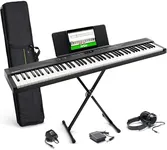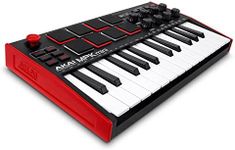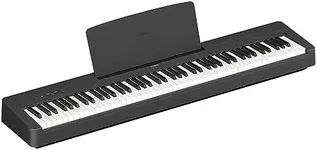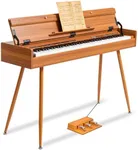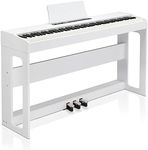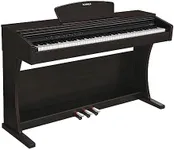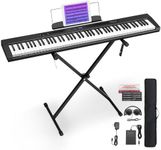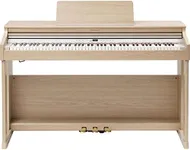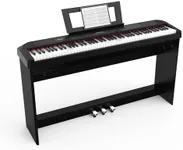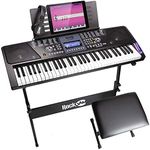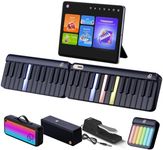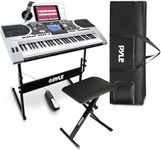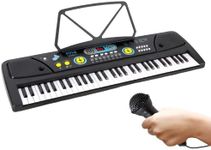Buying Guide for the Best Bluetooth Piano Keyboard
Choosing the right Bluetooth piano keyboard can greatly enhance your music practice and performance experience. When selecting a Bluetooth piano keyboard, it's important to consider several key specifications that will impact your overall satisfaction and usability. Understanding these specs will help you make an informed decision that aligns with your musical needs and preferences.Key CountThe key count refers to the number of keys on the keyboard. This is important because it affects the range of notes you can play. Keyboards typically come in 25, 49, 61, 76, or 88 keys. A 25-key keyboard is very portable and suitable for simple melodies and basic practice. A 49 or 61-key keyboard offers more range and is good for intermediate players. A 76 or 88-key keyboard provides the full range of a traditional piano, making it ideal for advanced players and those who want to play complex pieces.
Key ActionKey action refers to how the keys respond when pressed. This is important because it affects the feel and playability of the keyboard. There are three main types: synth-action, semi-weighted, and fully-weighted (hammer action). Synth-action keys are light and springy, suitable for beginners and those who need a portable option. Semi-weighted keys offer a balance between lightness and resistance, making them good for intermediate players. Fully-weighted keys mimic the feel of an acoustic piano, providing the best experience for advanced players and those who want a realistic piano feel.
PolyphonyPolyphony refers to the number of notes a keyboard can produce at the same time. This is important for playing complex pieces and using the sustain pedal. Keyboards typically offer polyphony ranging from 32 to 256 notes. For beginners, 32 to 64-note polyphony is usually sufficient. Intermediate players might prefer 64 to 128-note polyphony to handle more complex pieces. Advanced players and those using multiple layers of sound should look for 128-note polyphony or higher to ensure no notes are cut off during performance.
ConnectivityConnectivity options determine how you can connect your keyboard to other devices. This is important for integrating with music software, recording, and live performance. Bluetooth connectivity allows for wireless connection to devices like tablets, smartphones, and computers, making it convenient for practice and performance. Additionally, look for USB and MIDI ports for wired connections to computers and other MIDI-compatible devices. Beginners might prioritize Bluetooth for ease of use, while advanced users may need multiple connectivity options for more complex setups.
Built-in Sounds and FeaturesBuilt-in sounds and features refer to the variety of instrument sounds and additional functionalities available on the keyboard. This is important for versatility and creativity in your music. Keyboards can offer a range of sounds from different instruments, drum kits, and effects. Some also include features like recording, metronome, and lesson modes. Beginners might benefit from a keyboard with a variety of sounds and learning features to explore different styles. Intermediate and advanced players may look for high-quality sounds and advanced features to enhance their performance and composition.
PortabilityPortability refers to the ease with which you can transport the keyboard. This is important for musicians who travel or have limited space. Lighter and more compact keyboards are easier to carry and store, making them ideal for beginners, students, and those who need a practice keyboard on the go. Heavier and larger keyboards, while less portable, often offer more features and a better playing experience, suitable for home studios and professional use. Consider your lifestyle and how often you need to move the keyboard when making your choice.
